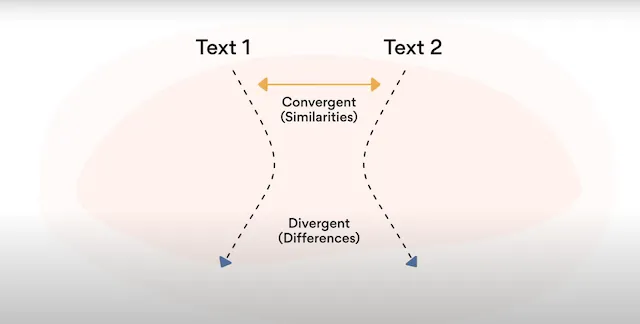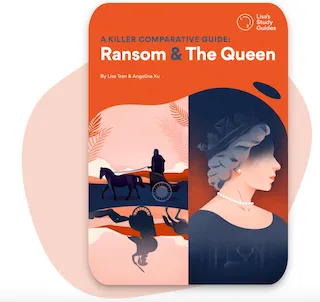Charlie’s Country is an Australian drama film directed by Rolf de Heer, starring David Gulpilil. The linear film, co-written by de Heer and Gulpilil, tells the story of Charlie, a middle-aged Aboriginal man living in the town of Ramingining. The audience follows Charlie as he sets off to reconnect with his Indigenous origins; choosing to abandon urbanised society, Charlie flees into the bush to live by his “Mother country”. Much to his demise, Charlie subsequently becomes ill and is admitted to hospital in Darwin. After discharging himself from the hospital, Charlie is quickly arrested for assaulting a policeman. Charlie serves time in prison for his crime and the film’s final scenes show Charlie, free and mentoring young Aboriginal boys in their native cultural traditions. As the audience follows Charlie’s everyday encounters, they gain insight into the harsh realities faced by Aboriginals in modern-day Australia. Through his individual plight for survival amidst illness and poverty, de Heer presents profound political commentaries on this very pertinent social issue, spanning decades in Australian history.
The film's critical acclaim upon its release in 2013 was the impetus in prompting conversations and debates about the politics of Indigenous Australians. De Heer’s depiction of this remote community grappling with issues as a result of government-imposed law serves to capture the oppression and deeply ingrained racism that continues to persist.
Tracks is one Australian woman’s survival narrative. The 1980 autobiographical memoir by Robyn Davidson, recounts her courageous 1700 miles trek across Australia, beginning from Central Australia towards the Indian ocean. In the effort to escape the monotony of her daily life, Davidson travels to her first destination -- Alice Springs -- in 1973 to start preparations. In the 2 years she spends there, she learns how to train camels and live minimally, the former proving to be a challenge. Despite her vehement will to refuse any kind of donation or financial help, Davidson eventually accepts a writing deal in partnership with National Geographic, providing the much-needed funds to confirm her departure. It's through this deal that she meets Rick Smolan, whom under the conditions of her deal has been recruited to photograph this journey - an unsettling compromise for Davidson which she ruminates on frequently in the novel. With her beloved dog Diggity and her camels, Davidson traverses the Australian landscape, discovering more about herself, her country and the people.
Fundamentally, this book is as much about Davidson’s internal transformation and personal frontiers as it is about exposing the colonial and masculine ethos that permeates Australian history.
Themes (Similarities and Differences)
At LSG, we use the CONVERGENT and DIVERGENT strategy to help us easily find points of similarity and difference. This is particularly important when it comes to essay writing, because you want to know that you're coming up with unique comparative points (compared to the rest of the Victorian cohort!). I don't discuss this strategy in detail here, but if you're interested, check out my How To Write A Killer Comparative. I use this strategy throughout my discussion of themes here and in a later section, Sample Essay Plan.
Isolation and Alienation
Charlie, drawing on Gulpilil's own experiences, becomes profoundly alienated from his Ramingining community to the extent where he serves no major function in the community life. Charlie is alienated both physically and figuratively, not only does he live in a makeshift hut on the outskirts of town, but he is separated from the Aboriginal community in this town and resents the fact that white Australians have assumed power over his land. He is evidently neglected from the wider society, which causes much of the internal and external conflict he experiences in the film, an ordeal which many within the Indigenous minorities can empathise with.
In his efforts to escape his life within the confines of the intervention, Charlie sees isolation and social rebellion as a mechanism to rediscover his Indigenous roots, spending time in nature to fulfil his journey for self-discovery and to gain the freedom he’s lost. Removing himself from a town permeated by imperial powers provides him with an opportunity to restore his lost sense of self-autonomy. De Heer is intending to reveal the difficulty of assimilation for Aboriginal Australians. He also highlights the importance of human connection and relational harmony for individuals.
“Do you mind if I call you Charlie? I have difficulty pronouncing foreign names.” “Now I’m a foreigner?” (Charlie and the Darwin doctor)
“It's isolated, it's remote.” (Policeman Luke on Ramingining)
“I work for them catching criminals, they don’t pay me.” (Charlie)
“I don’t know what’s wrong with him… shaming us.” (Pete on Charlie)
Robyn Davidson views complete isolation as a way to detach herself from the commercialism and expectations of modern-day Australia, to connect with nature and to challenge her own beliefs of herself. For her, complete solitude in this journey is a private and personal gesture designed to intentionally preserve the sanctity of the trip. While Rick Smolan’s company appears benign, Davidson’s abrasive attitude towards him as well as her reluctance in ‘selling’ her story is particularly revealing of her attempt to maintain the subjectivity of the trip. The act of breaching this solitude is what Davidson sees as an egregious debasement of the sacredness of the journey, allowing it to be objectified by the eyes of the public. In addition to this, isolation signifies liberation and freedom from a society laden with rigid expectations, Smolan acts as a constant reminder of these external responsibilities. Davidson experiences alienation from the wider society, being a confident, decisive woman trekking independently and defying the limitations imposed on her sex. She also repeatedly expresses her sense of alienation when entering Aboriginal communities and although she is sensitive to the impression she gives, she acknowledges her persistent feeling as an outsider. Davidson is aware of the divide between these two cultures that have resulted from a history of inequality and oppression. In Tracks, Davidson also demonstrates the need for meaningful connections, however she sources this from her animal companions and nature.
“My aloneness was a treasure which I guarded like a jewel... but like everything [it] had to follow the laws of change.” (p. 40)
“No more loved ones to care about, no more ties, no more duties, no more people needing you to be one thing or another, no more conundrums, no more politics, just you and the desert baby.” (p. 94)
“I could never enter their reality, [I] would always be a whitefella tourist on the outside looking in.” (p. 146)
“I could not be with the Aboriginal people without being a clumsy intruder.” (p. 146)
Conformity
Charlie’s displacement from his community is the driving force behind his decision to return to the Aboriginal way of life. De Heer uses this depiction of Charlie, to serve as a wider embodiment of the difficulty for the Indigenous people to assimilate and conform to the western lifestyle. After witnessing the limitations he faces under the ‘whitefella’ laws in Ramingining, it is Charlie who first attempts to escape his community. He repeatedly rejects the life of subordination and compliance under the government laws, which as shown in the film has forced many of the Indigenous people to neglect their own traditions and way of life (for example, they must now eat unhealthy fast foods to survive and go through school). Charlie’s individualistic expressions seen through crafting a spear and going hunting are actively suppressed by the white authority, leaving him to conclude that the only way to fully exercise his personal agency is to live in the Australian wilderness, alone. His act of abandoning the car with his belongings and parting with almost nothing in his possession is significant in demonstrating his defiance of the imposition of western culture and his journey for self-reliance. De Heer depicts how conforming to an oppressive society is detrimental and praises the self-transformative effects of embracing individualism rather than blindly conforming.
"Live the old way… …going to my Mother Country.’"(Charlie)
“F--- those thieving…white bastards.” (Charlie)
“The kids go to school now. They don’t care.” (Charlie)
“Why did you come here? From far away… stealing people’s stuff! Is this your land?... F---ing bastards.” (Charlie)
“I’m free now. I have my own supermarket! And this is my country! I can dance with it!” (Charlie)
Robyn Davidson’s decision to leave her normal life in Queensland to cross the Australian desertland is one that becomes the subject of much scrutiny and doubt. Her bold, dauntless approach towards pursuing this journey, specifically as a single, young woman was radically counter-cultural to the perception of women in the 1970s as delicate and docile individuals. Davidson’s indifference and somewhat dismissive attitude towards the derogatory remarks and reductive characterisations are indicative of her acknowledgement of the unjustified prejudice that permeates Australian culture. Additionally, Davidson’s assertive personality and commitment to travelling in the wilderness alone is ultimately an establishment to herself as an autonomous woman, rebelling against the traditional conventions of marriage, motherhood and domesticity that was previously expected of her. Ultimately, Davidson strongly asserts the need for resistance, particularly where there is the expectation for conformity, as well as her experience, is revealing of the cleansing and liberating feelings of embracing individualism rather than conforming.
“(Dropping eyes to chest level). "Where’s yer old man?" "I don't have an old man." (p. 5)
“I was self-protective, suspicious and defensive and I was also aggressively ready to pounce on anyone who looked like they might be going to give a hard time.” (p. 34)
“It was essential for me to develop beyond the archetypal female creature who from birth had been trained to be sweet, pliable, forgiving, compassionate and door-mattish.” (p. 34)
“I wanted to… unclog my brain of all extraneous debris, not be protected, to be stripped of all social crutches, not to be hampered by any outside interference.” (p. 91)
Belonging and Identity
The laconic and monotonous pace of the film is suggestive of a more deeply rooted issue surrounding the identity distortions experienced by Aboriginals, even to the present day. This depiction acts as a personification of the widespread troubles of Indigenous Australians -- the deep struggle between submitting to the institutions of the ‘whitefella’ intervention and clinging to what is left of their traditional heritage, often rendering them feeling separated from both cultures. The mundane nature of his daily activities conveys the social incongruence between Charlie’s struggle to live sufficiently as a ‘traditional’ elder or as a ‘modern’ Australian, finding himself disconnected from both. This internal battle is psychologically taxing for Charlie, as he encounters many contradictions: receiving welfare payments, only to have to give them away to his family, and so he goes without food and later becomes hungry, only to be denied the opportunity to hunt for his own food. Fulfilling one culture means rejecting the other, and freedom in one means rebellion in the other. Thus, Charlie sees social transgression as his only choice of refashioning his own identity. De Heer reveals how freely establishing a secure sense of identity and belonging in their culture is critical in the lives of these individuals, however, the long-term damage that western society has inflicted has made this almost impossible.
“You’ve got a job, and you’ve got a house…on my land. Where’s my house? Where’s my job?” (Charlie)
“We need to teach them… the traditional ways.” (Charlie’s friend)
“I’ve been away fishing, now I’m home. I’m eating well. It’s my own supermarket.” (Charlie)
“I’m free now. I have my own supermarket! And this is my country! I can dance with it!” (Charlie)
In Tracks, Davidson’s attempt to escape the responsibilities and social pressures to immerse herself in nature is ultimately a journey of self-discovery; to define her own identity irrespective of the expectations imposed on her by the 1970s society. As a solitary female, challenging the restrictions of her sex and exposing herself to unpredictable surroundings, she can curate her own identity as a progressive, post-colonial feminist, seizing and capitalising on the autonomy she has. This endeavour allows Davidson to undergo a form of self-transformation, a search for meaning for herself and others, what she describes as a “desocializing process -- the sloughing of, like a snakeskin”. Furthermore, Davidson is determined to rediscover her place in respect to the desertland, educating herself about the native biodiversity and most importantly, the native people. Although Davidson recognises that she will always be considered a ‘whitefella’, she finds a sense of fulfilment and belonging in engaging with and observing the rural Aboriginal communities. She demonstrates a deep understanding of the distorted identity and loss of belonging for the Aborigines at the hands of imperial white forces and is sensitive to the damage that has been inflicted. Above all, Davidson gains a renewed, stable sense of identity and belonging through her resistance to the imperial Australian racist mentality, challenging the male-orientated culture. However, she is also confronted by the reality of this breakdown of identity within the Aboriginal communities.
“This was my first home, where I felt such a sense of relief and belonging that I needed nothing and no one.” (p. 40)
“From the day the thought came into my head ‘I’m going to enter a desert with camels’, to the day I felt the preparations to be completed, I had built some intangible but magical for myself…” (p. 95)
“I wanted to understand so much… I melted into a feeling of belonging. They were letting me into their world. They asked me if I wanted to dance.” (p. 145)
“Once dispossessed of this land, ceremonial life deteriorates, people lose their strength, meaning and identity.” (p. 167)
Connection to Nature
The significance of nature to the Aboriginal people is at the core of this film. Charlie embodies this connection through his escape to the Australian wilderness. This first acts as a fresh alternative to the restrictive, repressive lifestyle within his government-intervened community, given. It's an opportunity to rebel against the western lifestyle and restore his traditional way of life, which leaves him feeling free, happy and powerful. However, his struggle to adjust to this change is indicative of the corruption of the intrinsic link between the people and the land. The harmonious, symbiotic relationship that the Indigenous people once had with the land has deteriorated; having been essentially poisoned through the introduction of a progressive white society. As much as Charlie tries to balance elements of both cultures by hunting and quitting smoking, it becomes apparent to him returning to where ‘[he] was born’, is the only way to rediscover his sense of self and truly experience freedom. Ultimately, like much of the wider Indigenous people, Charlie’s unable to fully abandon the constraints of white society and has become dependent. De Heer confronts the audience with the consequences of this irreversible separation through the illness and poverty that the Aboriginal people must endure.
“There’s lots of food in the bush… It's like a supermarket out there.” (Charlie’s companion)
“Then you’ll die in the wrong place… a long way from your country… They’ll be no one with you, no one to look after you.” (Charlie to a friend)
“I was born in the bush. They didn’t find me in the bush.” (Charlie)
“I want to go home now......back to my own country......where my place is...” (Charlie)
The connection to nature seen in Tracks serves several functions for Davidson. Contrary to the majority of attitudes of the time, Davidson can recognise the sanctity of the Australian land and is determined to learn about and experience this connection between the Aboriginal people and their environment. Like in Charlie’s Country, Davidson’s encounter with the rural, minimalist Aboriginal communities is a distinct contrast to the urban society which she leaves behind. It’s a sobering reminder to Davidson of the persisting racism and colonialist mentality which pervades Australian history and confirms the serious consequences that have occurred from the loss of connection between land and people. Even further, her battle to survive and adapt to the unpredictability of the desert is the ultimate test of endurance, which Davidson acknowledges enables lasting self-transformation and consolidates to her the true majesty and reverence of nature. Therefore, this escapism into the desertland is Davidson’s own challenge for personal change and a chance to experience true liberation like Charlie, as well as finding peace with the natives by means of acknowledging the usurpation of their traditional land and rights.
“All around me was magnificence. Light, power, space and sun. And I was walking into it. I was going to let it make me or break me.” (p. 101)
“It is difficult to describe Australian desert ranges as their beauty is not just visual. They have an awesome grandeur that can fill you with exaltation or dread, and usually a combination of both.” (p. 122)
“Besides, no amount of anthropological detail can begin to convey Aboriginal feeling for their land. It is everything -- their law, their ethics, their reason for existence.” (p. 167)
“And just as Aborigines seem to be in perfect rapport with themselves and their country, so the embryonic beginnings of that rapport were happening to me.” (p. 193)
Author Views and Values
Aboriginal Rights and the Intervention
Like in any comparison, it is important to understand some of the key events that were occurring at the time of both the text and the film. While Tracks and Charlie Country are set more than 3 decades apart, the issue of Aboriginal rights is still equally as important in both settings.
In Tracks, the 1970-80s saw many progressive milestones in Aboriginal history. Just years prior to Davidson’s departure, Australians voted for change in the constitution officially recognising Aboriginal people in the national census. Later, 1976 saw the Aboriginal Land Rights Act, which allowed the Indigenous people to assume ownership of land that was acknowledged to be rightly theirs. Many of these legislative changes were indicative of a larger-scale shift in attitudes towards the fairer treatment of Aborigines. While the oppression and racism continued, it was individuals like Robyn Davidson who pioneered the way for greater change and equality. Davidson ultimately intends to highlight the devastation that has occurred to the Aboriginal people following colonisation and aims to shine the light on the persisting issues these individuals face in an ostensibly ‘post-colonial’ Australia.
Examples:
- Despite some advancements of Indigenous rights in the 1970s, Davidson is firmly opposed to the ongoing racist attitudes held by white Australians.
- Davidson sympathises with the deep hardship endured by the Aboriginal people, which was characteristic of the evolving attitudes towards racial equality in 1970s Australia.
In addition to this, was the 2007 ‘intervention’. Charlie’s Country is set some years following the introduction of the Northern Territory National Emergency Response. Following reports of child sexual abuse and neglect, the Howard Government unleashed national forces to remote Indigenous communities in the effort to act as law enforcement and impose alcohol and drug restrictions. De Heer examines the consequences of what was described as a ‘last-ditch’ attempt to maintain power; an act that was widely criticised and showed to further exacerbate the suffering of the Indigenous people. Hence, de Heer’s film provides a personal insight into the difficulty of navigating life for Indigenous citizens as a result of the Intervention, and how Charlie’s struggles are representative of the anguish of the wider Aboriginal community.
Examples:
- Drawing parallels with the time of 2007 Northern Territory Intervention, de Heer intends to reveal the identity distortions that Indigenous individuals suffered due to the enforcement of westernised laws.
- De Heer’s depiction of Charlie’s alienation from Ramingining was indicative of the wider Aboriginal population in the time following the 2007 Intervention, which saw the introduction of new restrictions into rural communities in the Northern Territory.
Women's rights in Australia
The 1970s was a critical time for women's rights in Australia. At this point in time, after the first wave enabled women to vote, the second wave of feminism was moving through the nation. Women all across Australia were now fervently advocating for their own autonomy and freedom in the workplace and at home; their efforts directed more to dismantle the rigid social structures and expectations that were demanded from them. Davidson is an avid proponent for this cause and demonstrates a tactful and astute understanding of her image as a white, middle-class woman. She openly reiterates her distaste for the sexist remarks and misogynistic caricatures she faces and is determined to confound the restrictions placed on her sex of being a domesticated and weak female. Overall, Davidson is promoting the principles of breaking through societal expectations, however, also reveals the many challenges she encounters in doing so.
Examples:
- Davidson’s defiance of the traditional female image is indicative of the progressive attitudes regarding women's rights in 1970s Australia.
- Davidson’s embodiment of feminist ideas was synonymous to the 1970s second wave of feminism, where women in Australia were fighting for more freedoms at work and at home.
Comparing metalanguage and film techniques
It can be a bit daunting trying to compare techniques in a novel to those in a film. In this instance, it is crucial to first look at the idea you are comparing. For example, we can observe that both Tracks and Charlie’s Country show the liberating and cathartic feeling that comes from escaping social pressures. Now, let's look at how Robyn Davidson and Rolf de Heer achieve this, albeit in different manners. In Tracks, Davidson uses imagery to describe the desertland she meets, when she says, “It is like a vast unattended communal garden, the closest thing to earthly paradise I can imagine”. De Heer communicates this premise of freedom, however, does this by featuring a variety of diegetic sounds of the biodiversity in which Charlie finds himself.
Another example is how intimacy with protagonists is edified. De Heer uses sustained, intimate close up shots and at many times breaks the fourth wall by having Gulpilil look directly at the camera. On the other hand, Davidson employs colloquial language and is liberal with her use of expletives in order to convey a casual, conversational mood between herself and the reader.
Other aspects to consider:
Anthropomorphism in Tracks is the act of attributing human traits or behaviours to a god, animal or object. Davidson’s use of anthropomorphism to describe the animals around her (specifically the camels and her dog Diggety) is suggestive of the necessity for companionship for humans; the need to establish meaningful connections with others. For Davidson, companionship with animals comes easier than with humans (presuming this stems from her perception of society as problematic and grossly flawed).
Examples:
- Davidson on camels: “They are haughty, ethnocentric, clearly believing they are god’s chosen race. But they are also cowards and their aristocratic demeanour hides delicate hearts. I was hooked.” (p. 14)
- “[The camels] hung around me like flies, shuffling their feet, looking embarrassedly at the ground or coyly through their elegant lashes, acting apologetic and loving and remorseful…” (p. 80)
- “Diggity had become a cherished friend rather than simply a pet.” (p. 227)
- “[Diggity] combined all the best qualities of god and human and was a great listener." (p. 207)
Cinematography, specifically types of cinematic shots in Charlie’s Country. Those commonly seen in the film include wide shots (camera captures a wide view of the context or setting), close up shots (camera captures events from a short distance away; involves a character’s facial features and expressions), as well as panoramic shots (camera pans around horizontally, showing surroundings). Directors are intentional in the type of cinematography they employ; therefore it is crucial to observe the context in which these shots take place in order to enrich the analysis.
Examples:
- Several wide angle, landscape shots of nature, both at the beginning of the film and when Charlie first enters the Australian wilderness.
- Close up shots of Charlie sitting by the fire, and when he is in prison.
- Panoramic shots of Aboriginal art that Charlie discovers in the wild.
- Panoramic shot also in the courtroom where Charlie is on trial.
Remember! When analysing, you must consider where these occur in the context of the film’s narrative, and the effect they have on enhancing the events/themes/broader ideas being presented in the scene. (i.e. How are the characters portrayed compared to their surroundings? Compared to others? How are they interacting with these elements? Why has the director chosen this angle/shot?)
Sample Essay Plan
Compare how Tracks and Charlie’s Country present the importance of Individualism.
Sample Introduction:
Set amidst an era of significant social and political change, Robyn Davidson’s autobiographical memoir ‘Tracks’ and Rolf de Heer’s film ‘Charlie’s Country’ explores the plight of individuals who embrace individualism. Both Davidson and de Heer assert that individualism is necessary for the protagonists, who find themselves marginalised from the wider population. Through their respective journeys to independence, Robyn and Charlie achieve a sense of empowerment through identity self-refashioning, as well as they express their disapproval of the toxic institutions of society. However, the text and the film also demonstrate how at times, embracing individualism can present challenges to those who pursue it. Ultimately, Davidson and de Heer commend those who do not fully conform to society.
Paragraph 1: Charlie and Robyn gain empowerment through independently establishing their own identity.
Robyn sees the trip as a demonstration to herself of the shedding of the traditional image of white, middle class woman:
- “Am I an individualist because I believe I can take control of my own life? If so, then yes, I was definitely that.”
- “I had… been sick of carrying around the self-indulgent negativity which was so much the malaise of my generation, my sex and my class.”
- Describes the experience as a “gentle catharsis” and that “[She] was happy”.
Charlie’s abandonment of the Ramingining community is an attempt to resolve the identity ambiguity he feels as a result of the Government intervention.
- Charlie appears to receive government benefits only to have to give it away to family, later divulging that “I have no money left… or food. I’m hungry”. When he tries to source food by traditional means, he is punished. All this demonstrates his struggles in balancing two cultures.
- Going back into his “Motherland” he is joyful, dancing and eating again. Recognises a sense of security in going back -- “That’s what I want”, “now I’m home”.
Paragraph 2: Embracing individualism for the protagonists means resisting toxic societal constructs.
Robyn adamantly condemns the deeply entrenched racism of Australian culture and sympathises with the Aborigines and their hardship. Her determination to learn about the Aboriginal people is an attempt to overcome the wedge that has been driven between the two communities:
- “Racism is a daily experience for blacks in Alice Springs. It reinforces their own feelings of worthlessness and self-hate.”
- “Large mining corporations… lusting after Aboriginal Reserve land.”
- The dependency of the Aboriginal people termed as a “handy PR stunt” for government and policies equated to “apartheid in South Africa”.
Charlie becomes increasingly resistant against the traditions and policies of the government institutions.
- Many times he is seen throwing cigarettes into the fire -- his resentment towards the introduction of white customs. "You come from far away and bring us alcohol, ganja, tobacco... all bad!"
- Charlie rejects the white lifestyle by refusing to eat the food in the community, recognising its detrimental properties. Charlie on illness: “It’s all that… white man junk food we eat."
Paragraph 3: Resisting conformity is challenging for Robyn and Charlie, particularly in an oppressive society.
Robyn is met with harsh opposition and derogatory depictions in the media:
- Labelled “the next town rape case.”
- Discovers feces on her pillow one night in Alice Springs -- “let my presence be known as if I were a trespasser.”
- “‘Camel lady’ had that nice patronising belittling ring to it.”
Charlie is constantly shut down when embracing the ways of his culture; ultimately submitting to individualism also unveils his dependency on white society.
- He is charged with ‘recreational shooting’, and his hunting spear is considered "a dangerous weapon."
- Charlie’s confession earlier about his false teeth: “I can’t eat with them… I can eat without them” alluding to this dependency on society.
- The irreversible damage of white intervention is evident in Charlie’s poor health as a consequence of going back to “the old way” -- must go to the hospital.
Additional essay topic and prompts:
‘Resistance to conformity is at the forefront of Tracks and Charlie’s Country’. To what extent do you agree?
Discuss the ways in which the environment assists the protagonists in their journey for self-discovery.
‘The connection to the land is significant for the characters of both Charlie’s Country and Tracks’. Discuss.
‘The stories of Charlie and Robyn represent the plight of many others’. To what extent do you agree?
Compare the ways in which characters in Tracks and Charlie’s Country seek to discover what really matters to them.
‘Despite their deep hardship, Charlie and Robyn find transformation in their journeys’. Discuss.
Useful Resources
How to Write a Killer Comparative
Reading and Comparing Tracks into the Wild
Compare the Pair- A guide to structuring a reading and comparing essay
The link between your contention and topic sentences in relation to the prompt
Master Reading and Creating











.png)












.jpg)